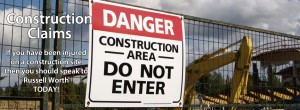
Scaffolding as an occupation is not for the faint-hearted. It ranks alongside construction and farming as one of the most dangerous sectors. This is not surprising, as falls constitute 30 percent of fatalities in the workplace. Thankfully, strict health and safety regulations govern the use of scaffolding, ensuring that the number of serious incidents are minimal.
It is important to remember, scaffolding, as safety equipment, is designed ‘from the ground up’ to keep workers safe from falls, while working at height. Scaffolding is absolutely integral in modern construction, ensuring a safe and secure platform for workers above ground level. But despite the many measures in place to minimise accidents, there is no room for complacency.
Correct construction and use ensures worker safety
Putting aside the obvious danger of height, if constructed, used and maintained properly, scaffolding is safe. In the event of a slip, or an item of machinery or construction material falling, safety nets will prevent an injury. If level, well anchored and built to specification, the scaffolding itself will be structurally safe. If proper training for workers is provided, everyone will use the scaffolding in the way it is designed, ensuring their’s and everyone else’s safety.
So why is scaffolding so dangerous?
There are many factors which can lead to scaffolding being less safe and hence posing a risk to those working on or below it:
- Improper design and construction – once the decision is made that scaffolding is necessary for a construction project, it is essential that the correct design (whether bespoke or ‘off the shelf’) and type of scaffolding are used. All scaffolding must be able to withstand the intended load by a multiple of four. This provides a large safety margin in the event that excessive loads are placed on the scaffolding. The design of the scaffolding must be undertaken by a person who is qualified to do so and can identify the risks on the specific site. The structure must include mandatory safety features such as cross-bracing, guardrails, mesh/screening and full flooring (planks). It is also important that the whole scaffolding structure is built of matching components, to maximise the chance of incompatible parts being used leading to failure. In addition, the scaffold must be placed upon solid and level ground, and full consideration must be given to ensuring that workers or members of the public are not vulnerable to objects falling from the scaffold.
- Failure to perform regular checks – Scaffolding must be inspected prior to its first use, then checked every seven days (or following an adverse event such as bad weather) by a trained supervisor, to ensure the scaffolding structure remains safe to use. Failure to perform regular checks can lead to serious consequences.
- Inadequate training and personal protective equipment (PPE) – Even the safest scaffold is an accident waiting to happen if workers are not given the necessary training and access to proper safety equipment. Everyone using scaffold should have attended a certified course designed to provide a complete understanding of its construction, use and maintenance. Training includes the general responsibilities of the employee, use of lifting equipment, terminology, use of PPE, avoiding trips and falls, securing tools and building materials, and ensuring the scaffold is kept safe including reporting any damage or wear and tear. PPE includes hard hats, eye protection, hand protection, safety harnesses/fall arrest systems and protective boots. Any cutting of corners in either training and equipment can be a direct cause of accidents leading to potentially serious and life-threatening injury or even death.
- Moving scaffolding in an unsafe manner – Under no circumstances should scaffolding be moved from one part of a building site to another without a proper risk assessment. It is essential that all workers are removed from the platform, and the floor along which the scaffold will be moved should be completely flat and unobstructed. It may be necessary to reduce the height of the scaffold considerably to avoid the likelihood of tipping. Under no circumstances should a scaffold be moved close to an overhead power cable.
Claiming for compensation
If you have suffered an accident on a scaffolding platform and it can be proven that your employer (or the company responsible for the safety of the scaffold) did not perform their duties as outlined above, you may have a strong case for claiming compensation. If you are unsure if you have a case or if you would like to discuss your accident with a view to making a claim, contact one of our personal injury solicitors today.
At Russell Worth Solicitors we specialise in personal injury claims. If you have had an accident on scaffolding at work and would like a free claim assessment so that you can understand your rights, please call us now on 0800 028 2060 or complete our Online Claim Assessment.

